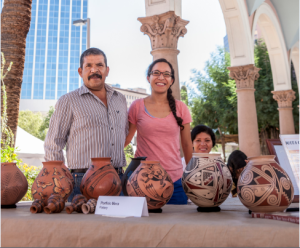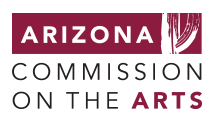The following post was contributed by Dr. Maribel Alvarez, Executive Program Director of Southwest Folklife Alliance (SFA), and was originally published in 2015 in association with the launch of SFA’s Master-Apprentice Award. This month, SFA is accepting applications for the program’s second year. On Saturday, April 30, 2016, Southwest Folklife Alliance’s Leia Maahs will present an orientation session on the Master-Apprentice Award at the Arizona Commission on the Arts’ offices in Phoenix. Click here to learn more.
It has become a common practice in our society to associate the word “genius” to the fields of science, technology, and math. Mention the word and Steve Jobs comes immediately to mind. Every so often, it is the turn of a novelist, poet, painter or even a pop singer to get called out for their towering talent (or maybe just charisma). But there is another kind of “genius” that often goes unnoticed; the kind that sociologist Gary Alan Fine called “everyday genius” or “remarkable people who toil, sometimes in the face of indifference.”[1]

There’s no better tangible evidence of this kind of brilliance than that which we find in the makers and transmitters of arts of everyday life in communities all around Arizona. Sometimes “hidden from view” to the larger public, but extremely visible and influential in their own niche circles, there are tribal elders, occupational experts, storytellers, ethnic dancers, cooks, horticulturalist, quilters, weavers and singers who beautify our lives every day. Sometimes called “folk artists” because they work with traditional or heritage-based art forms, their skills might have been learned informally (no academic degree), but they are not for that reason any less extraordinary.
 In 1983 the National Endowment for the Arts began the first nationwide Master-Apprentice program in Folk Arts. In nearly four decades more than 5,000 apprenticeships have been awarded – representing a wide variety of cultural forms, from quilt making in Utah to African American tap dance in Pennsylvania to Ukranian egg decoration in North Dakota. States like Missouri, Alaska, Alabama, and Louisiana have been prolific pioneers in this area. Arizona has never offered this kind of grant until now.
In 1983 the National Endowment for the Arts began the first nationwide Master-Apprentice program in Folk Arts. In nearly four decades more than 5,000 apprenticeships have been awarded – representing a wide variety of cultural forms, from quilt making in Utah to African American tap dance in Pennsylvania to Ukranian egg decoration in North Dakota. States like Missouri, Alaska, Alabama, and Louisiana have been prolific pioneers in this area. Arizona has never offered this kind of grant until now.
The Master-Apprentice awards are first and foremost a validation and a modest form of encouragement. An important element of the program is that it recognizes art-making as existing in its own context – the church, the shop, the kitchen table. In the world of traditional arts, apprenticing happens in all kinds of informal ways — “hanging out” is perhaps the most common method. The Master-Apprentice awards simply make the already existing learning relationships more systematic for a short agreed amount of time.
The staff at SFA welcomes calls, emails and one-on-one consultations before the deadline, June 1, 2016. The assistance of local art advocates in identifying potential candidates for this opportunity is greatly appreciated. Call (520) 621-4046. More information can be found at southwestfolklife.org/master-apprentice-program.
[1] Everyday Genius: Self-Taught Art and the Culture of Authenticity, Gary Alan Fine, The University of Chicago Press, 2004, p. 273.
This blog entry was contributed by Dr. Maribel Alvarez, Executive Program Director of Southwest Folklife Alliance. For more information about the Master-Apprentice Grant, please visit www.southwestfolklife.org/master-apprentice-program.
Photos: Krishel Augustine, Navajo Singer/Songwriter (upper left); Porfirio Mora and Lizeth Mora, Ceramic Artists (lower right). Photos



